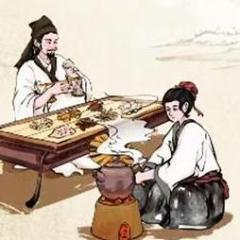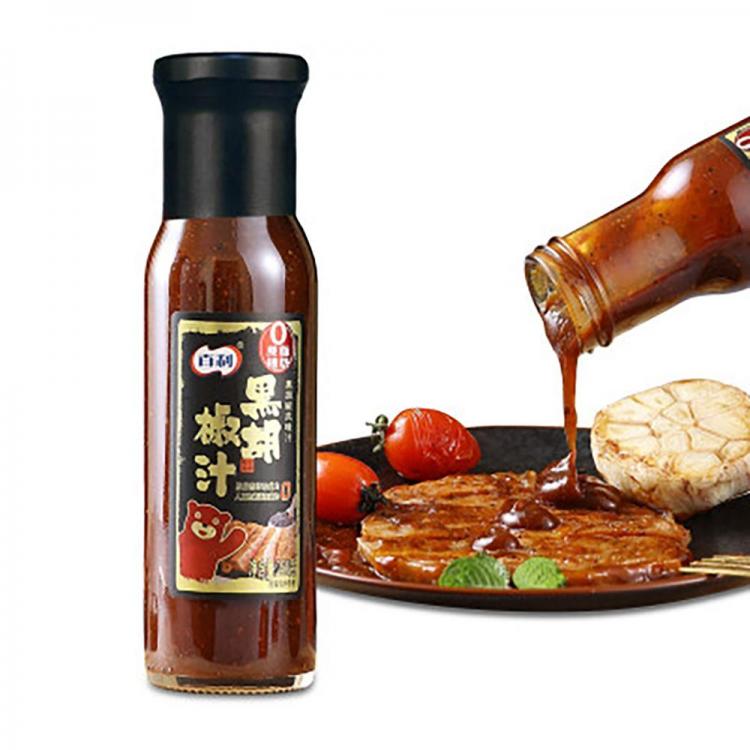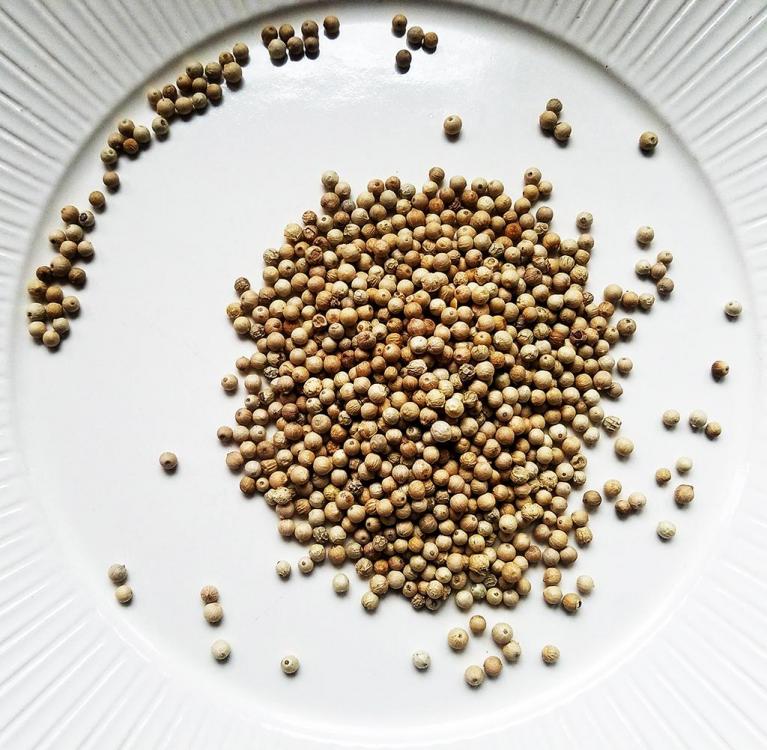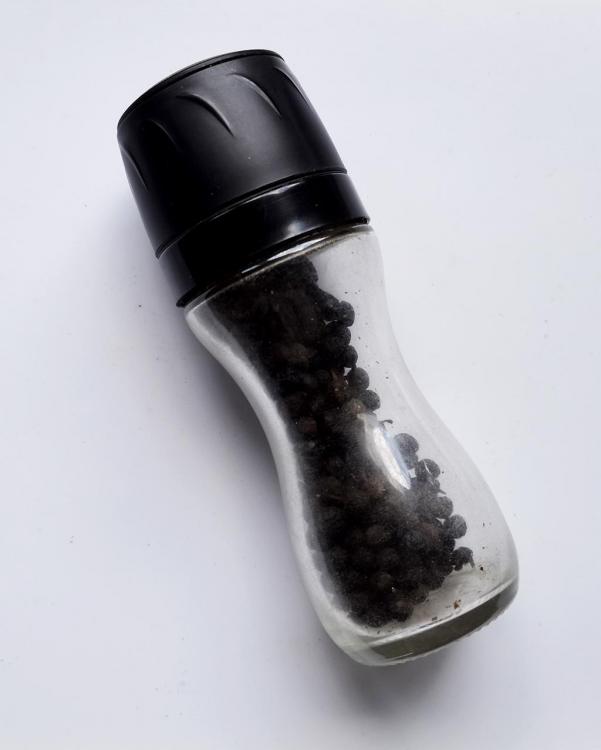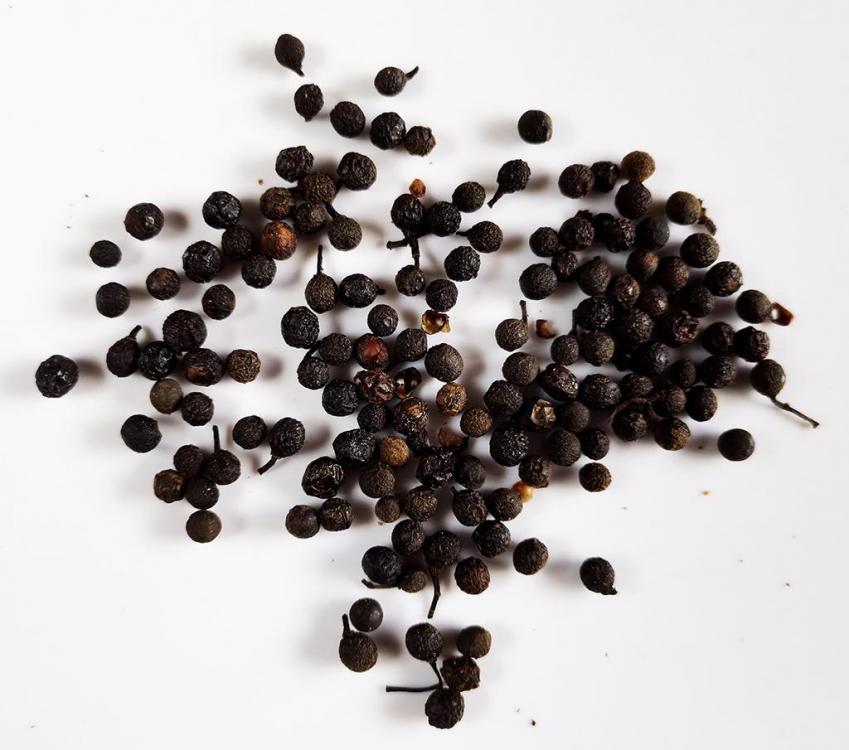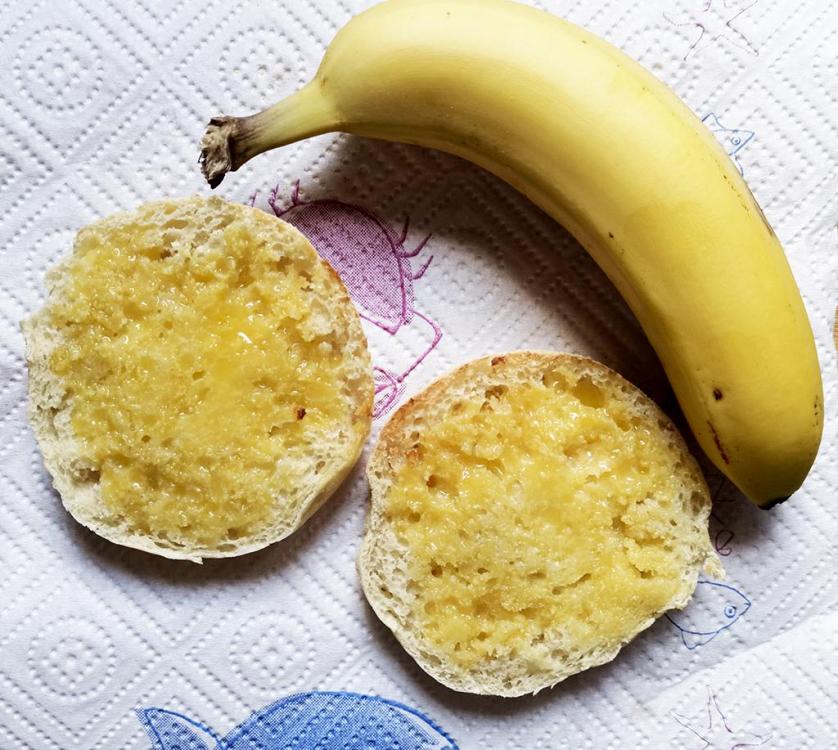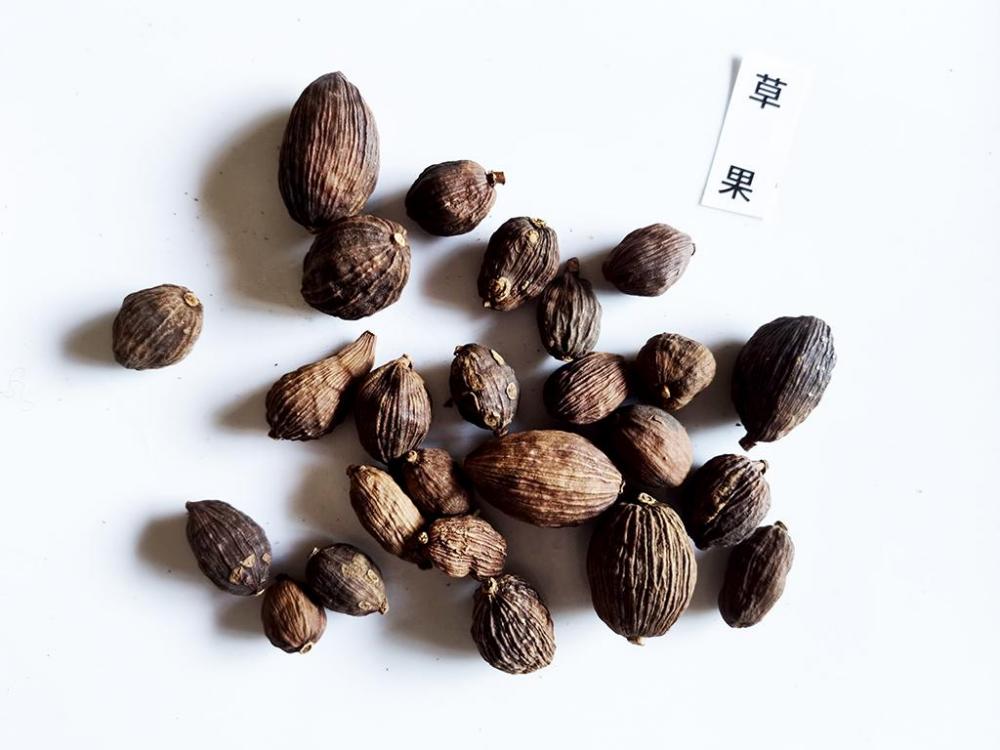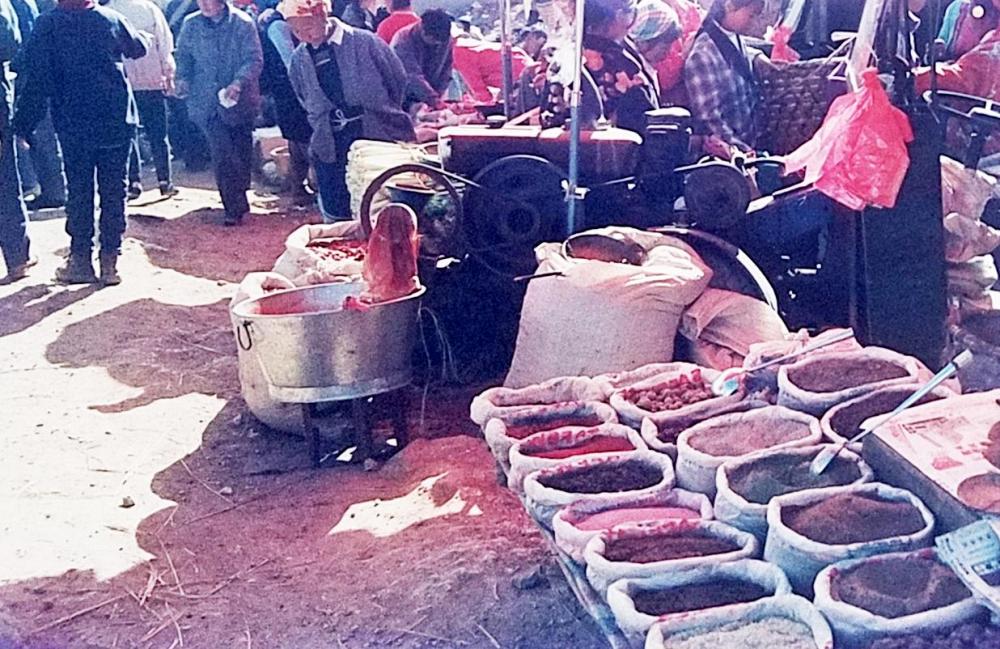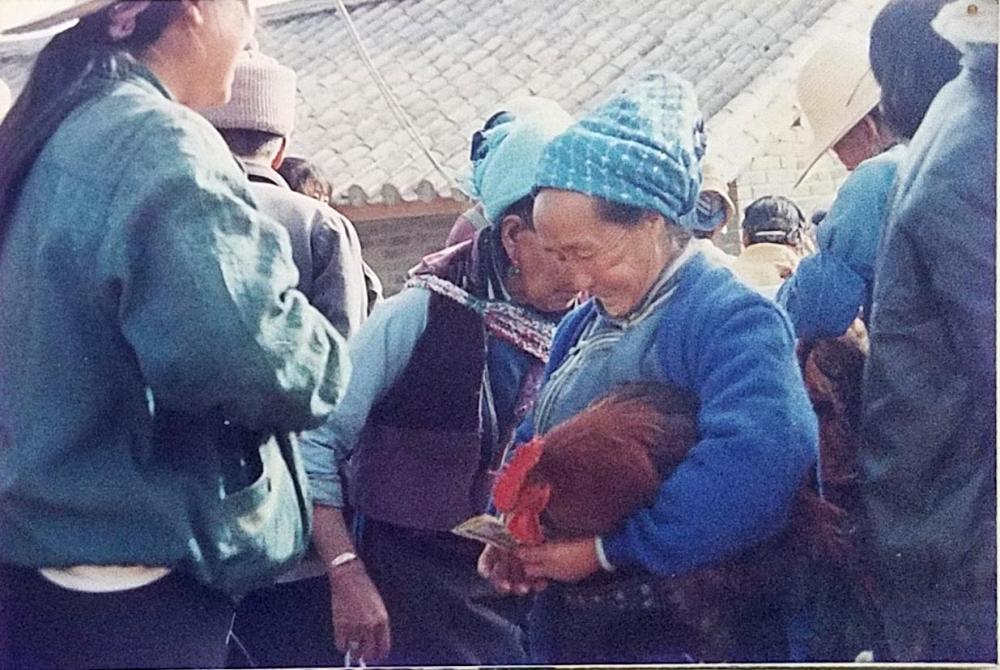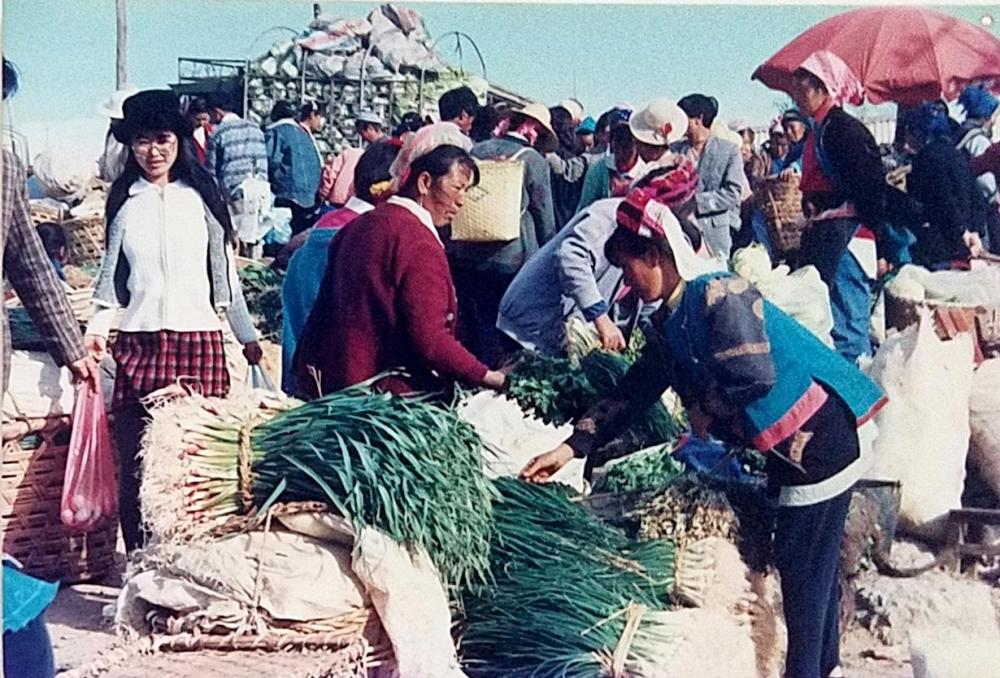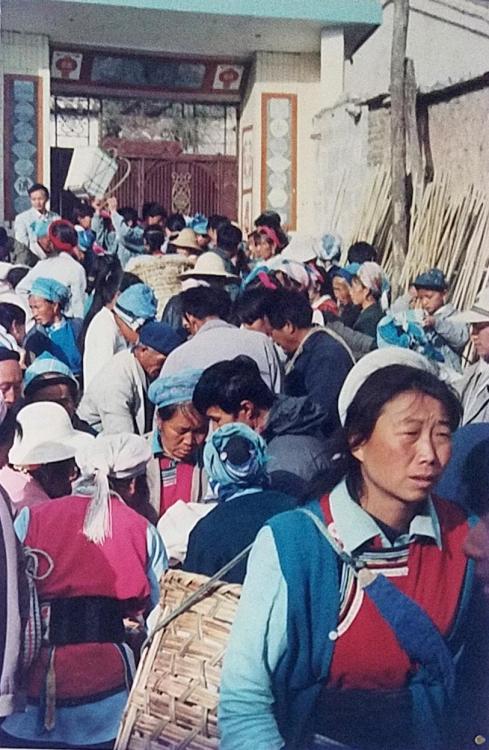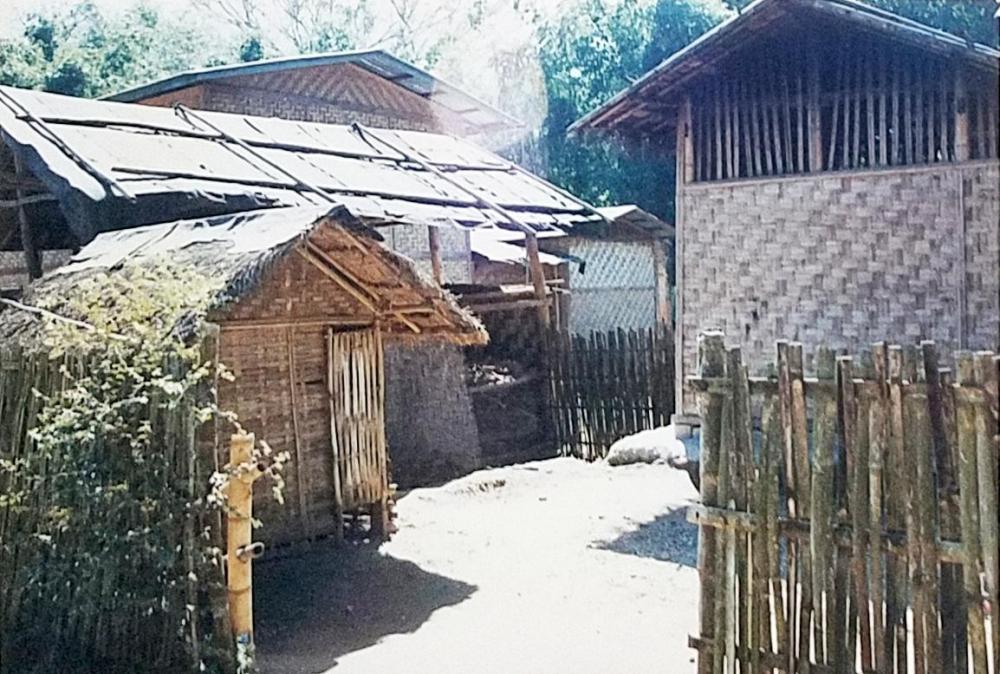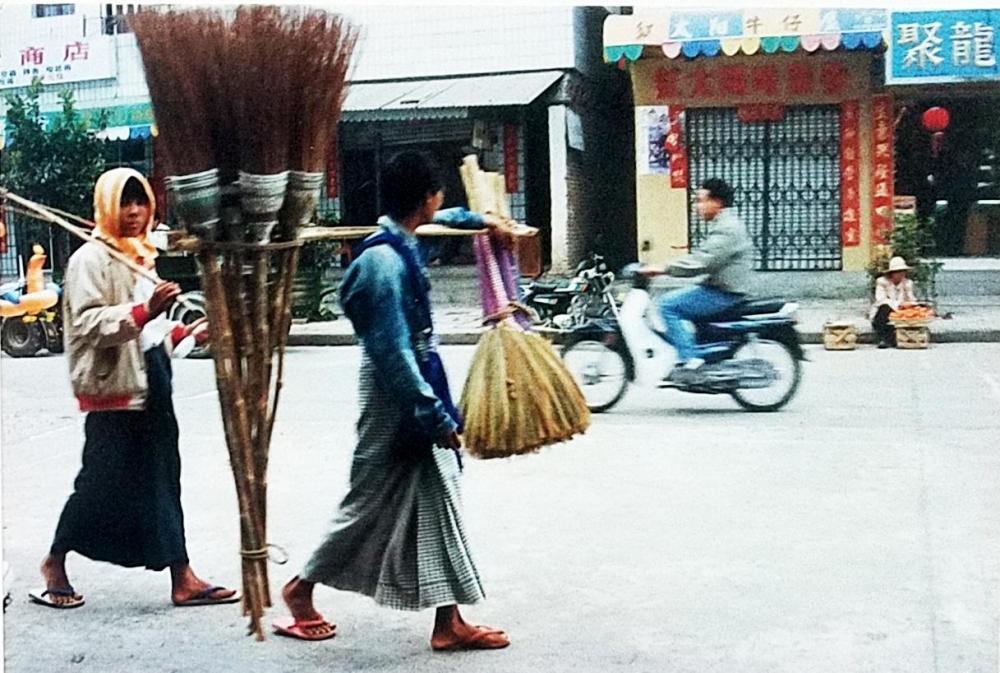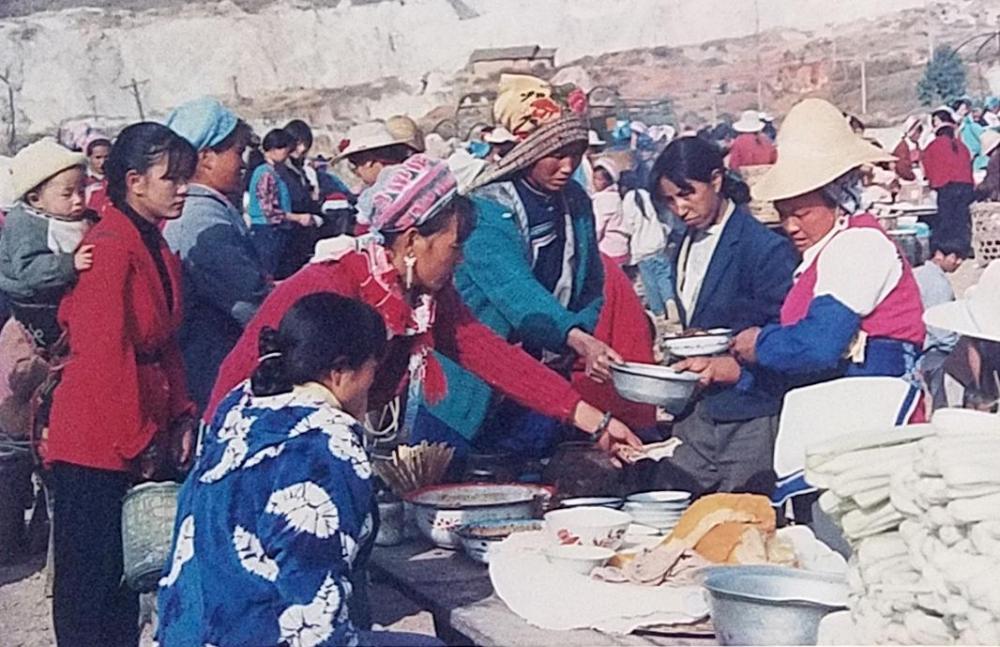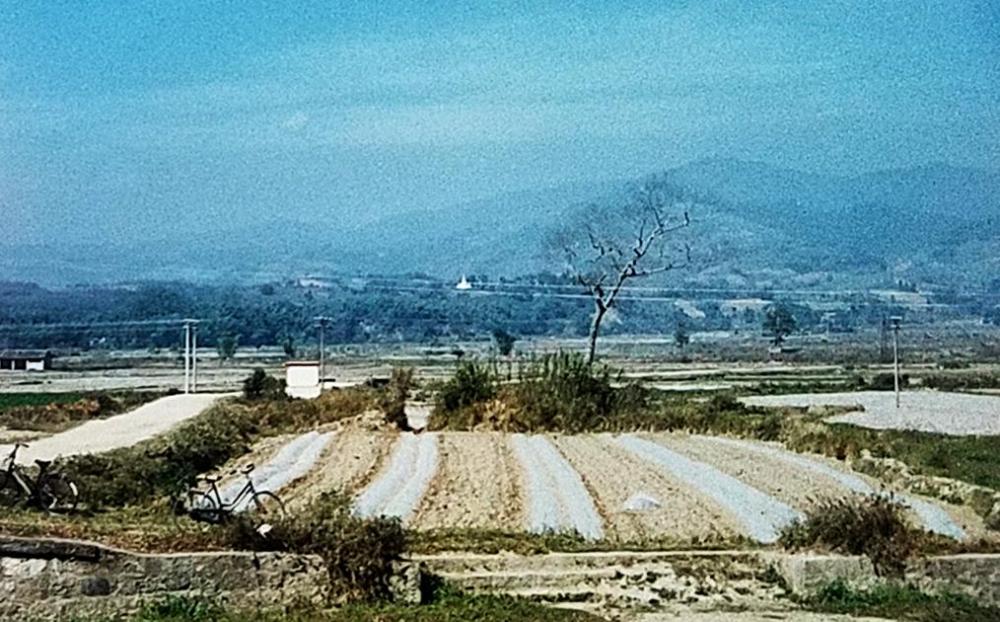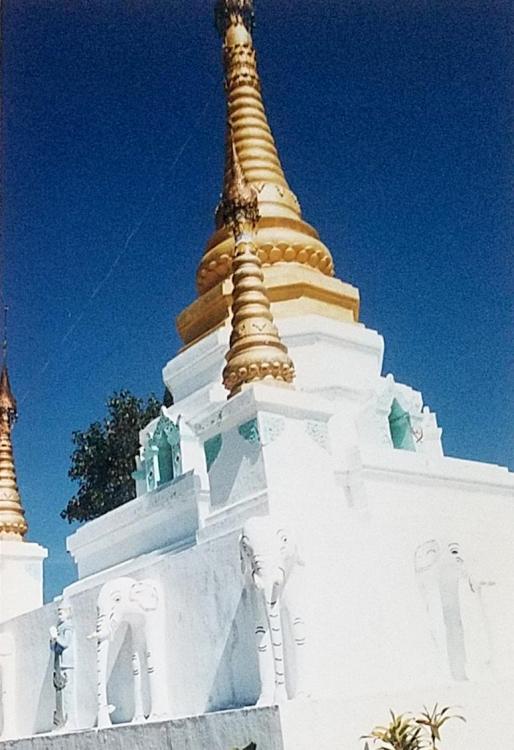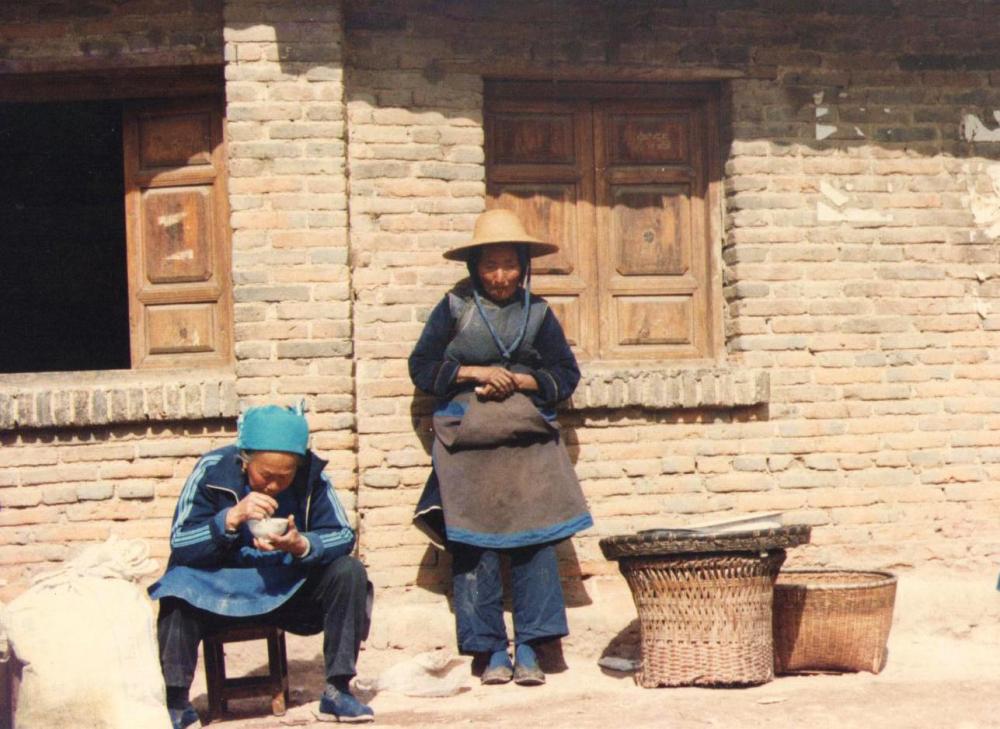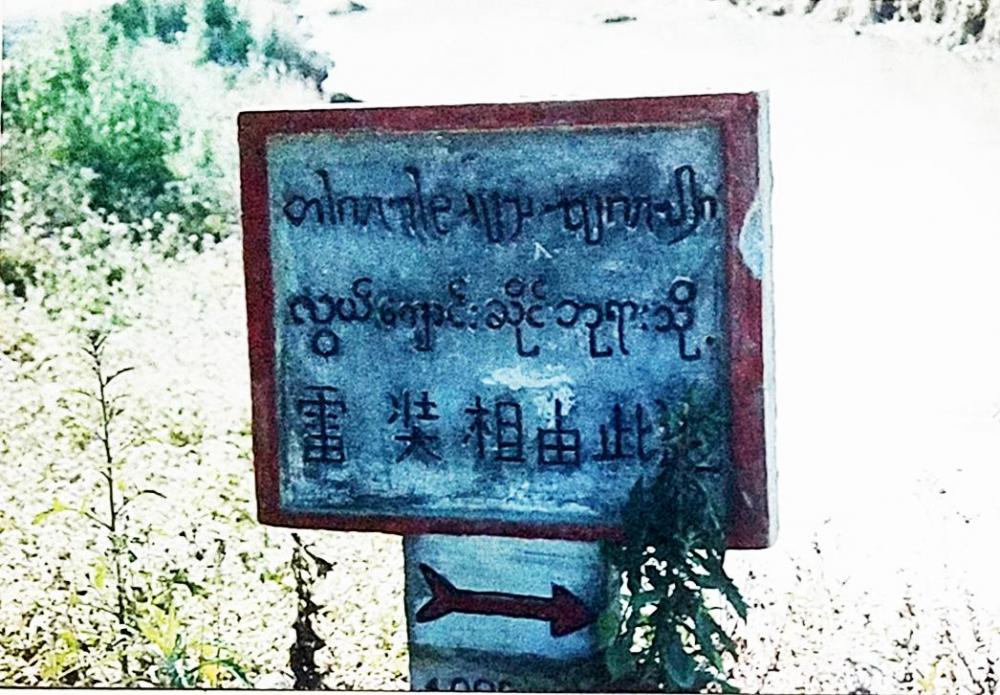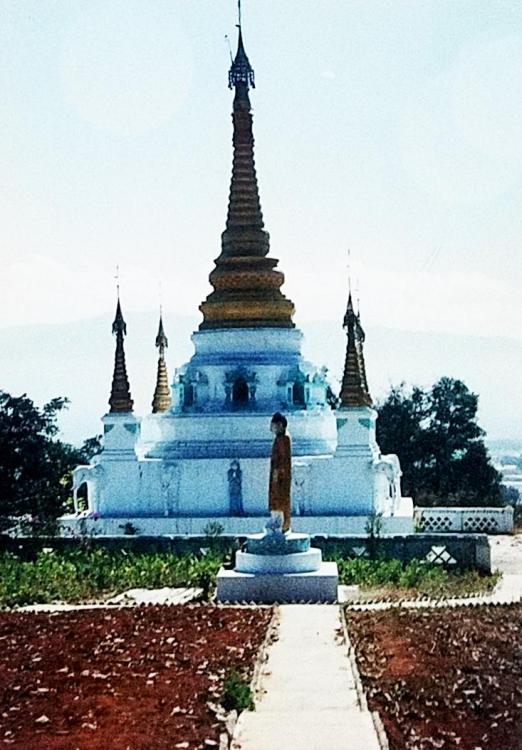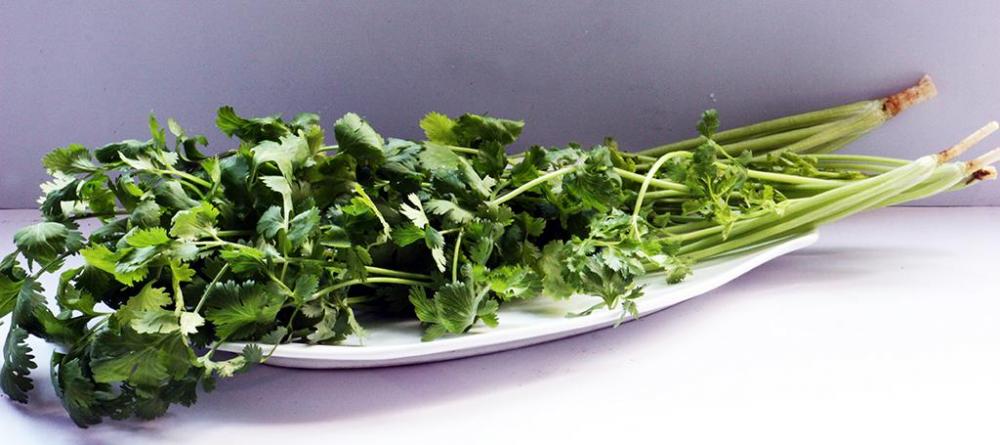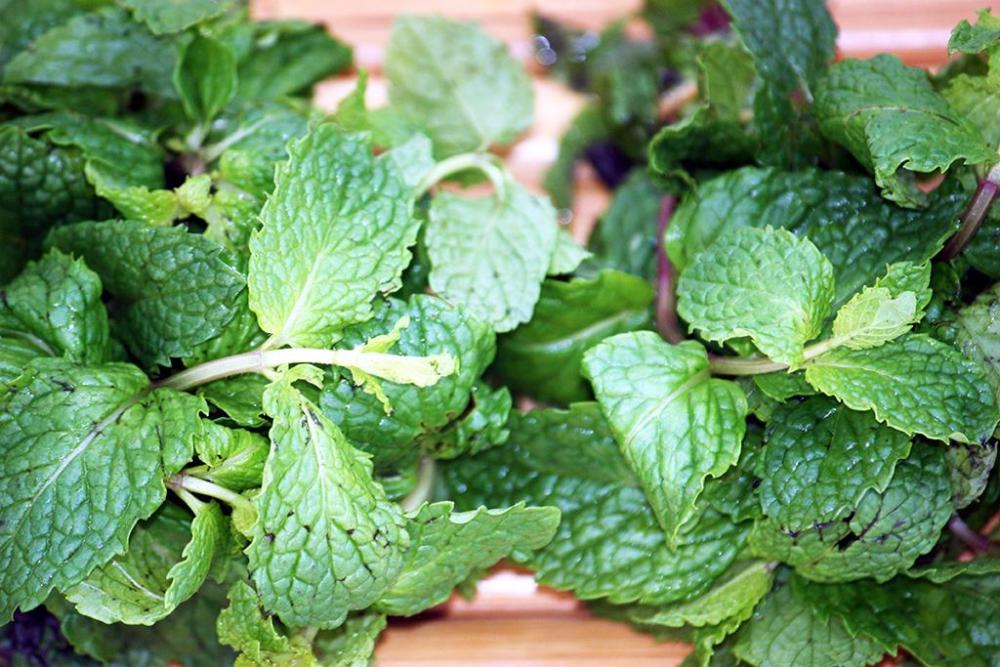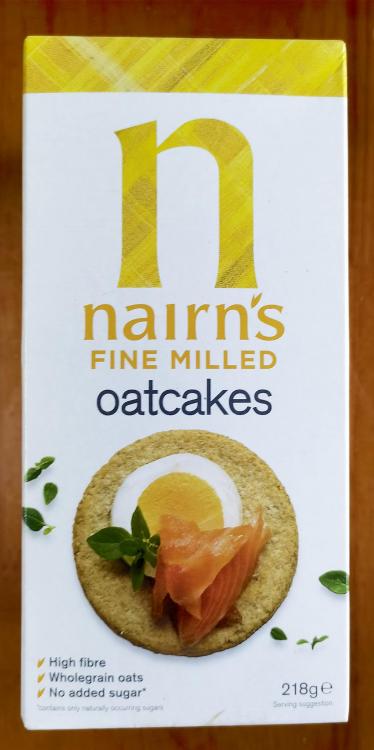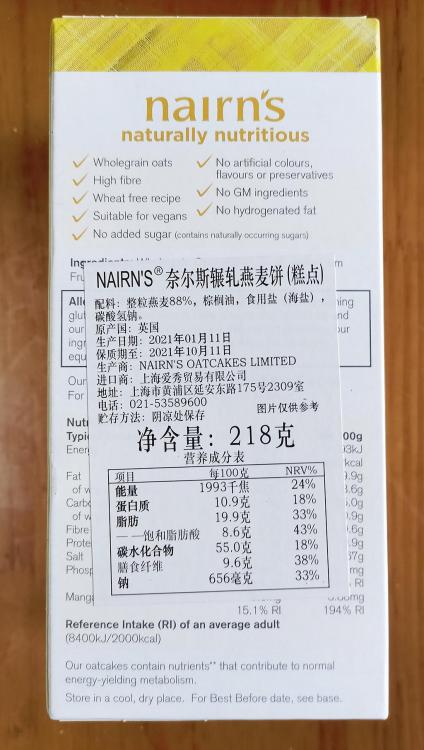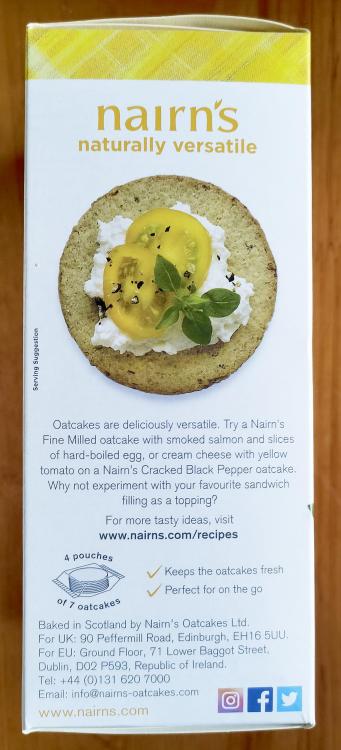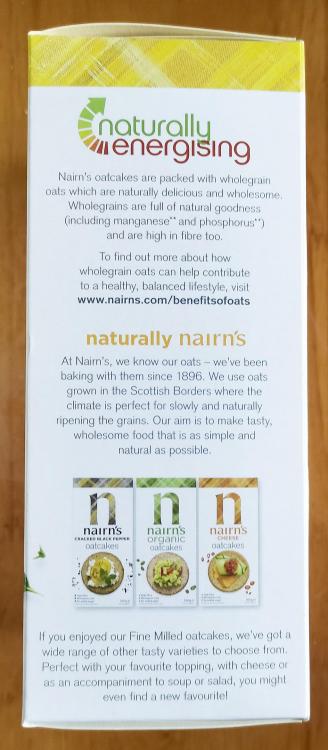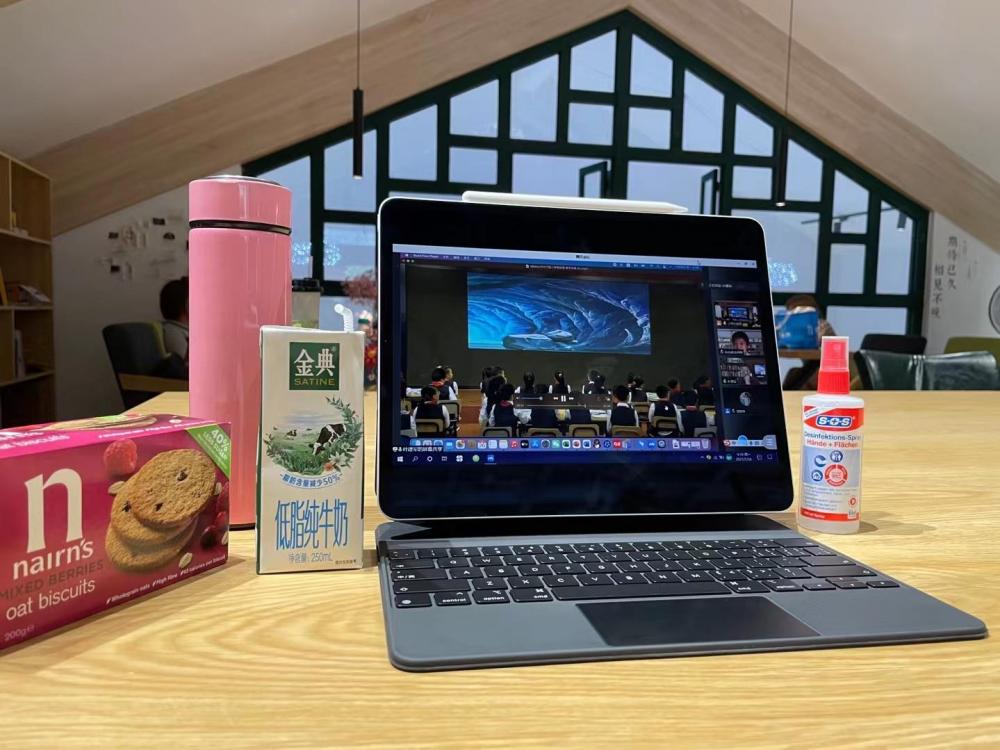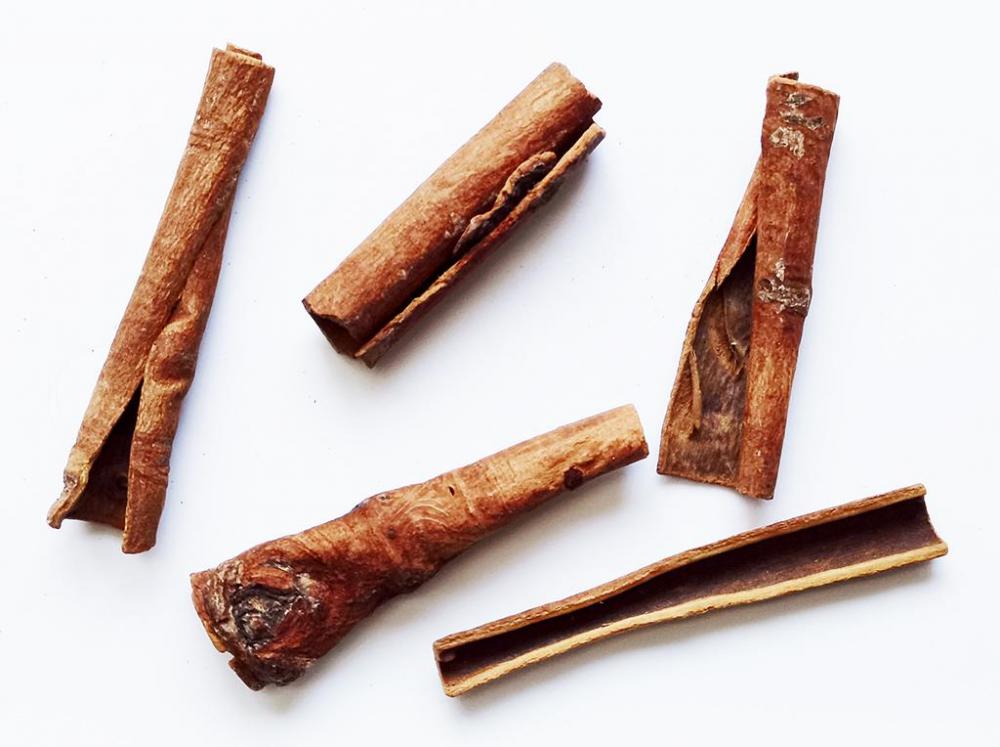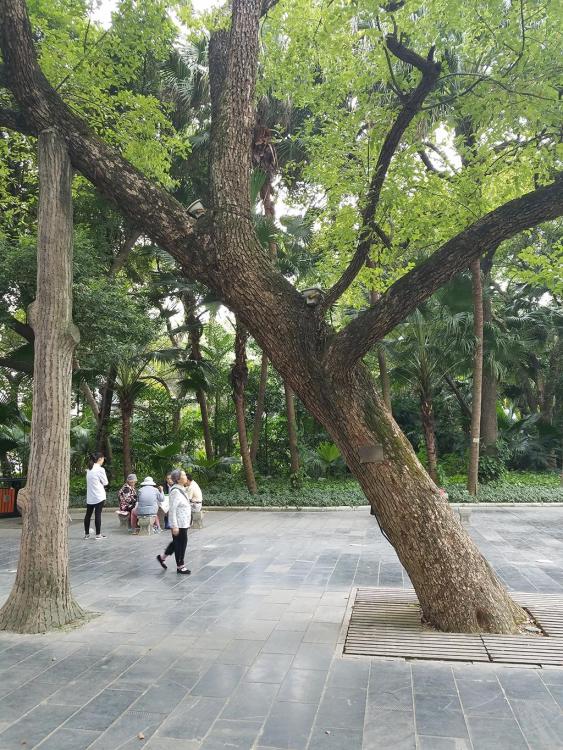-
Posts
16,658 -
Joined
-
Last visited
Content Type
Profiles
Forums
Store
Help Articles
Everything posted by liuzhou
-
I have contacted by PM her with a recipe.
-
Indeed. Yangzhou lion's heads are slightly different from the Shanghai version (mostly in the way they are served), but neither are steamed. Or contain eggs.
-
Hmmm.The three tablespoons of sugar seems widely excessive. Looking through my Chinese language books, no recipe has near as much. In fact, most have no sugar. Same with the three large eggs. Few recipes use eggs, at all. That sounds like a lion's omelette! And not one of my recipes suggests steaming them. They all simmer them in a broth.
-
6. Pepper – 胡椒 (hú jiāo) - Piper nigrum I suppose I should mention common pepper. Both black and white pepper are available. However, white pepper is by far the most commonly used in Chinese cuisine. The ‘hot’ in traditional ‘hot and sour soup’’ is from white pepper, not chilli. After all, chilli is a relatively new ingredient to Asia having been introduced by the Portuguese in the 16th century, but not immediately being adopted. That didn't happen until the 18th century. Pepper was introduced from Kerala, India to which it is native, over two millennia ago. The Chinese name 胡椒 (hú jiāo), literally means ‘foreign pepper’. White Pepper 白胡椒 (bái hú jiāo), white pepper, the dried ripe seed of the plant, is sold everywhere, either as whole seeds or, for the terminally lazy and clueless, pre-ground. It is the go-to pepper for all Chinese cuisine, being used in every part of China. That said, it isn’t added to every savoury dish to the extent we do in the west. It, too, is in many five-spice powders. You are never going to see salt and pepper on a Chinese dining table. Black pepper 黑胡椒 (hēi hú jiāo), black pepper, made from the cooked unripe fruit which is then dried, used to be rather difficult to source, but today it is in most larger supermarkets in the cities, again whole corns or pre-ground. In the countryside or small towns, forget about it. It is mainly used in foreign dishes and everyone knows that the only sauce foreigners know how to make is the black pepper sauce lathered over every steak – the only meat foreigners eat. They also pour the same sauce over pasta and call it Italian! Jars of the revolting concoction are available in some supermarkets. Criminal Offence! Many years ago, I bought both types of pepper in these grinders. I've never bought them that way since. I just keep refilling them from small (30g / 1oz) bags which I buy regularly. Illegitimi non carborundum
-
Buttery muffin and a banana. There was also a glass of tomato juice which I managed (just) not to Bloody Mary-ize!
-
5. Black Cardamom – 草果 (cǎo guǒ) - Lanxangia tsaoko (or, less often in China, Amomum subulatum) Only distantly related to the green cardamom (Elettaria cardamomum), black cardamoms are the seed pods of a herbaceous plant in the ginger family. They are dried over an open fire, giving them a distinct, strong smoky flavour. Do not substitute them for green cardamom, which has a much milder flavour. The are sometimes used in five-spice powders, few of which actually contain only five spices. Numbers are often only vague in the Chinese language. More often they are added to hot pots, stews and braises. It is best to crack the pods before dropping them into your pan. They are usually removed before serving. Pre-ground black cardamom is a good buy if you like throwing money away. Always buy the pods. They will last a year or longer in a cool, dark place.
-
Yes. I'd seen that video. The residual heat technique is very common in many cuisines. I use it almost every day and did so long before I came to China. I have expanded more on Dai culture in this new topic.
-
I am posting this in connection with the dish mentioned in the Chinese Herbs and Spices topic, where a question arose about the use of mint in Yunnan cuisine. Rather than fully respond there and derail that topic, I thought a new topic would be better. Yunnan, for those who don’t know, is a province in the south of China. Within China, it borders Tibet, Sichuan, Guizhou and Guangxi provinces. On its southern and western sides, it borders Myanmar/Burma, Laos and Vietnam. Yunnan's Dai people are ethnolinguistically related to the Thai people and most of them live in the south of Yunnan, mainly in Xishuangbanna Dai Autonomous Prefecture and Dehong Dai and Jingpo Autonomous Prefecture. Xishuangbanna is where that pack of wild elephants which went walkabout come from. They are now safely back home. The area also has wild tigers. I spent Chinese New Year 1998 in the small city of Ruili in Dehong, right beside the border with Myanmar's troubled Kachin State. Every day local people were wandering back and forward over the border, mostly unchecked. I was unable to use the official crossing, but more on that later. It was a fairly lawless region and many goods (and people) were routinely smuggled in both directions. It is near the notorious 'Golden Triangle' and drugs, particularly heroin, were a major problem, as was prostitution. Yunnan had the highest AIDS infection rate in China. On the evening of Chinese New Year’s day, I was invited to a celebratory dinner, all of which was Dai cuisine. Not surprisingly, it was highly reminiscent of Thai and other SE Asian cuisines. However, of the many dishes, none included mint, though other herbs mentioned in the video posted here did appear. Here are a few images of the people, area, and market. Unfortunately, I don't have the photographs of that dinner here. They are back in England. Please remember these images are scans of old pre-digital photographs, so not of the usual quality. These Burmese boys (yes, boys) have crossed into China hoping to sell their brushes. The end of that striped field with the tree in the centre marks the border between China and Myanmar's Kachin State. The field is in China; the tree is in Myanmar. As you can see, no border control whatsover. The Market Do you want chili or chili with that? Wow! I got my chicken and change! Herbery Dai Houses are made from bamboo and the walls roll up to ventilate the inside as required. I want one! One day, I went on a long trek trying to find this monastery / temple (雷装相 - léi zhuāng xiāng) I'd read about and got happily but hopelessly lost. At one point I was wandering down this road, no one in sight, when I came across a deserted village. I don't know how I worked it out, but it suddenly came into my head that I had accidentally crossed the border and was in Myanmar. I turned round and ran back to China. Getting caught in Myanmar, without even a passport, never mind a visa would have me shot as a spy! Back in China, I was standing staring at this sign in three languages, trying to glean any useful information. I knew the bottom language was Chinese, but the other two baffled me. At that time my Chinese reading skills were very limited, so that didn't help either. One of the others is the Dai script, I now know, but can't read. The other possibly Burmese. Don't ask me which is which! As I stood there being puzzled, I saw this orange-robed, Chinese monk approaching. He stopped and asked me in perfect London-accented English if he could help! I was stunned! He explained that he had studied in London when younger before taking holy orders and entering the very monastery which I was looking for. He escorted me to the temple / monastery chatting all the long way.
- 8 replies
-
- 11
-

-

-
Quick rule of thumb. If your "cinnamon" is S.E. Asian, it's probably cassia. If it's from Sri Lanka or India. it's probably cinnamon.
-
My Yunnan friend just got back to me to say she can find mint, but it isn't common. She also said she only knows one dish that uses it. 牛肉薄荷 - Beef mint!
-
1. Thought so. 2. Maybe, but it's American-Chinese 3. As I already said, Lion's Head Meatballs are definitely a thing in China. Just not that recipe. 4. Good. 5. OK 6. Haha! Here in China we eat rice every day! But not with meat balls. We don't eat them with noodles either. 7. The instructions do say "To cook on the hob. Add the noodles to boiling water for 1 to 2 min, drain and serve immediately." My stress. Also, those are Japanese noodles.
-
I do have a good friend in Yunnan. I'll ask how common it is. I haven't been there since Mao was a baby.
-
Well, I'm close to the Vietnam border and like I said can only find it sporadically from one vendor. I do grow it myself. In fact, Guangxi is the major trade route btween the two countries - just not for food. It is source of great frustration to me how little vegetation or any other food is imported from Vietnam. I mean I can almost see the damn place from my window! (Slight exaggeration). There isn't a single Vietnam restaurant in town that I'm aware of. I want to go to Vietnam! But, of course, I can't right now.
-
I am not objecting to American-Chinese cuisine and I'm sure the result would be tasty, but Susan did say the recipe was "real Chinese". It isn't, if you define 'real Chinese' as how it is made in China, which I think was her meaning.. For a more "real", traditional recipe see Fuchsia Dunlop's Land of Fish And RIce (eG-friendly Amazon.com link).
-
Don't I always? 😂 If it is that recipe, it isn't very authentic. (I've never been impressed by that website). As they say but oyster sauce is Cantonese and not at all traditional in Lion's Head Meatballs. Neither is 5-spice powder. This is a heavily American-Chinese orientated recipe. Pork shoulder is all wrong - they are made from pork belly. They are usually served in a broth. I've never seen them with noodles. I'd like to know what noodles she used that turned to wallpaper paste, and how she cooked them, but I'm afraid to ask; it took a lot of effort to find out what the recipe might be! But noodles turning to paste just means they were overcooked.
-
4. Fresh Herbs I thought I’d get this one out of the way. It won’t take long. In most of China, the only fresh herb available in supermarkets or other food stores is coriander leaf / cilantro. Known in Chinese as 香菜 (xiāng cài, literally ‘fragrant vegetable’). It is used in thousands of dishes from stir-fries to hot pots to fried rice etc. I always have it in the kitchen. Coriander / Cilantro When I lived in Hunan in the 1990s, there was a woman on the street near my home with a large pan of boiling oil over an old, charcoal-fueled, oil can stove who dropped sprigs of the herb into the oil until it deep-fried to crisp perfection - in seconds. She then sprinkled it with salt and chilli flakes and served it wrapped in paper. It was heavenly. I never passed her without buying some. And it cost almost nothing. Incidentally, Chinese cuisine extremely rarely uses coriander seed. I’ve never once seen it in any store or market, other than a market for farmers, selling the seeds for planting. It is not recommended to eat those seeds as they have been artificially treated with seed germination enhancers. Even online, all the seeds for human consumption are imported. The ones I use (in non-Chinese dishes) are from India. One vendor in my market of choice here does occasionally have mint (薄荷 - bò he), although it is rarely used in dishes – more often in ‘teas’ or ‘herbal medicines’. Mint Parsley is even more rarely seen or used. And that is about it. Some plants like garlic chives, sometimes considered herbs in the west are just considered to be vegetables here.
-
This could be fun. A few days ago, a friend in China sent me some pictures of her daughter. Included for some reason was this. What grabbed my attention was the Nairn's oat biscuits on the left. I was in shock. Scottish oat cakes in China. I know the brand - they are Edinburgh-based. I leapt onto the main online shopping portal I use and sure enough I found them - out-of-stock! I established that the company do have an office in Shanghai. This morning, I was in the local over-priced foreign food store in town looking for some Dijon mustard and on the way out passed the biscuit / cookie aisle. Not something I usually pay any attention to. And there in front of me were these. They also had the same company's 'oats and syrup biscuits', 'coconut and chia oat biscuits' and 'dark chocolate chip oat biscuits'. I ignored all that nonsense and went straight for a packet of the plain ones. I know it makes sense. They aren't the best Scottish oatcakes in the world, but better than none. Now I am just waiting for the goats cheese I have ordered to arrive. P.S. The damn store was out-of-stock on the Dijon mustard. P.P.S. 'Biscuits' here refers, of course, to the British meaning.
-
Actually, the prop is a tree! It has been lopped and replanted where its support is needed. Nearby there is an ancient camphor wood tree (also a memberof the Cinnamomum family, Cinnamomum camphora) which needs six of these tree props.
-
Vietnamese cinnamon is closer to cassia than to true cinnamon. Sri Lankan cinnamon is probably the best for baking, if you can find it.
-
No. The flavour is very different. I just meant they are used in the same manner. Chuck one or two into a braise or stew. I have no experience with growing cinnamon or cassia, but I'd guess you could use the leaves, yes.
-
3. 桂皮 (guì pí) - Cassia Bark - Cinnamomum cassia Another local is cassia bark 肉桂 (ròu guì) or 桂皮 (guì pí), Cinnamomum cassia, which is native to Guangxi, neighbouring Yunnan province and equally neighbouring northern Vietnam. A few days ago I accidentally found myself watching a YouTube video in which a one-time winner of Masterchef, Australia was opining about various ingredients used in a Chinese dish. I was spitting at my computer screen as he came out with utter, ignorant drivel. Among the tirade of nonsense emanating from his mouth was the preposterous claim that cinnamon is the inner bark of the tree while cassia is the outer bark. Pillock! Cinnamomum cassia tree in my local park. No, they don't all lean like that! Cinnamon and cassia are related but different trees. (True cinnamon is from Cinnamomum verum or Cinnamomum zeylanicum, both native to the Indian subcontinent.) Both edible spices are from the dried inner bark of their respective trees. I wouldn’t trust that ‘master’ to boil me an egg! It is true, however to say, that most cinnamon sold in North America is actually cassia. That troubles me. They do taste a lot different, with true cinnamon being considerably less pungent and more delicate. Cassia can be bitter if too much is used. Go sparingly. Cassia is generally better suited to savoury dishes, whereas cinnamon more to sweet dishes. Cassia is yet another ingredient in five-spice powder and the quills or pieces there of are also added to hot pots, braises and stewed dishes. The leaves, flower buds and seeds are all used, too. The leaves are used like bay leaves. Please note that what is often sold as 'cassia seed', isn't cassia at all, but a completely different plant.
-
It would help if you said what the sauce was. Chinese cooking is not all anything. Like most cuisines it has both strongly flavoured and mild dishes. Saltiness should be balanced. Over or under-seasoning would be equally bad.


